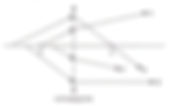319 results found with an empty search
- Vernier caliper and Micrometer screw gauge
Vernier caliper and micrometer screw gauge are used to measure length. Vernier caliper is used in general for measuring length between 0 to 15 cm . Micrometer screw gauge is used in general for measuring length between 0 to 2.5 mm . The accuracy (precision) of – ruler (0.1 cm) – vernier caliper (0.01 cm) – micrometer screw gauge (0.01 mm)
- Distance of sound detector from walls
Answer: Option B
- Minimum distance h mirror from the floor
Answer: Option B
- Different Converging Lens Ray Diagram questions
Drawing ray diagrams for converging lens come in many forms. But the basic concepts needed are the 3 rays (which have rules to follow) to locate the image. The following ray diagrams for the 4 scenarios must be learned well, together with the respective image characteristics and applications. Example A Example B Example C Example D Example E Example F Example G Example H Example I Example J
- Object is released and free-falling. Time taken to fall vertically from P to Q?
Keep in mind that you can utilize the two main concepts of a speed-time graph. As object is under free-fall, the acceleration (the gradient of the graph) is 10 m/s2. The area undereath the speed-time graph is the distance. So the area under the graph from P to Q is 120 m. With this two equation, you can solve all unknowns. Solutions: Option A
- Converging Lens – Which ray is correct after passing through the lens
Which of the following light rays behaves correctly when it passes through the converging lens? Solutions: Option C Recall these basic concepts on the 3 rays
- Displacement-time and Velocity-time Graph of Ball Thrown Up / Ball Dropped
1) When a ball is thrown up and it comes down When the ball leaves the hand, there is no upward force acting on the ball. The only force acting on the ball is its weight. This net force is opposite to the motion of the ball, hence causing the ball to decelerate. 2) When the ball is dropped and it re-bounces back (assume no energy lost) When the ball is released, the only force acting on the ball is its own weight. This net force on the ball is in the direction of the motion, hence causing the ball to accelerate as it falls. Note that the acceleration due to gravity is assumed to be 10 ms-2, where air resistance is negligible. 3) When the ball is dropped and it re-bounces back (in reality with energy lost) In reality, when the ball hits the ground, there will be some energy converted to heat and sound. So the ball will never return to its original height that it was released. So how will the graphs look like?
- 2004PPp1q15 - Volume of bubble at bottom of lake (P1V1 = P2V2)
Answer: Option A Since the air bubble is enclosed, PV at A is equal to PV at B. PAVA = PBVB (Patm + Pwater) VA = (Patm) VB (10 + 20) VA = 10 x 6 VA = 60 / 30 = 2 cm3
.png)











